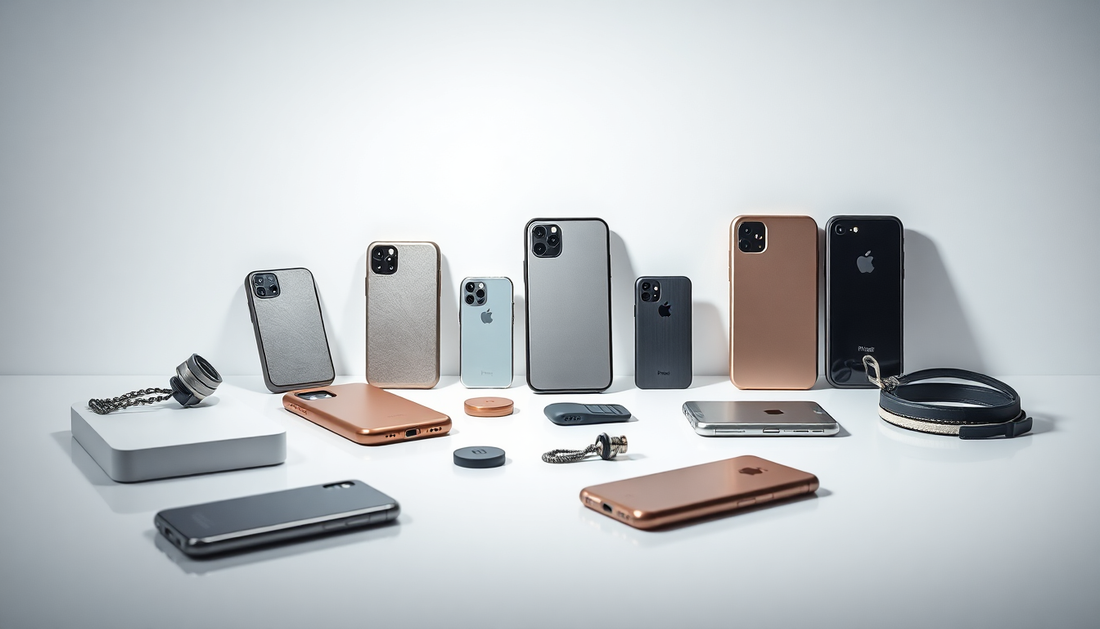
The Future of Smartphone Technology: Innovations That Will Shape Our Digital Landscape
In the ever-evolving world of technology, the smartphone has become an indispensable companion, seamlessly integrating into our daily lives. As we stand on the cusp of a new era, the innovations that are shaping the future of smartphone technology are poised to redefine the way we interact with our digital devices. From foldable displays to the integration of 5G, artificial intelligence, and augmented reality, the landscape of smartphone technology is undergoing a transformative shift that will have far-reaching implications for both consumers and industry leaders.
Foldable Displays: The Future of Smartphone Design
One of the most exciting developments in the smartphone industry is the emergence of foldable displays. These innovative screens, which can be folded and unfolded, offer a unique and versatile user experience. By providing a larger, more immersive display when unfolded, foldable smartphones open up new possibilities for media consumption, productivity, and multitasking.
As the technology behind foldable displays continues to evolve, we can expect to see increasingly durable and reliable designs that can withstand the rigors of everyday use. The ability to seamlessly transition between a compact, pocketable form factor and a expansive, tablet-like display will redefine the way we interact with our smartphones, blurring the lines between traditional mobile devices and larger, more versatile computing platforms.
The Benefits of Foldable Displays
The introduction of foldable displays brings with it a host of benefits that cater to the diverse needs of modern smartphone users. Some of the key advantages include:
1. Increased Screen Real Estate: Unfolding a foldable smartphone provides users with a larger, more immersive display, allowing for a more comfortable and engaging experience when watching videos, browsing the web, or multitasking.
2. Enhanced Productivity: The expanded screen real estate of foldable smartphones enables users to be more productive, with the ability to split the display and run multiple apps simultaneously, or to utilize the device as a mini-tablet for tasks such as document editing and note-taking.
3. Improved Portability: When folded, foldable smartphones maintain a compact and pocketable form factor, making them easy to carry and transport, without sacrificing the benefits of a larger display.
4. Versatility: Foldable smartphones offer users the flexibility to adapt the device to their specific needs, whether it's a compact, one-handed use mode or a more expansive, tablet-like experience.
As the technology behind foldable displays continues to mature, we can expect to see even more innovative and user-centric designs that push the boundaries of what a smartphone can be.
5G Technology: Powering the Future of Connectivity
The advent of 5G technology is another game-changing development that is poised to transform the smartphone landscape. With its lightning-fast data speeds, low latency, and increased network capacity, 5G promises to revolutionize the way we interact with our digital devices, enabling a new era of seamless connectivity and immersive experiences.
The Impact of 5G on Smartphone Performance
The integration of 5G technology into smartphones will have a profound impact on their overall performance and capabilities. Some of the key benefits include:
1. Blazing-Fast Data Speeds: 5G networks can deliver download and upload speeds that are significantly faster than previous generations of cellular technology, allowing for near-instant data transfer and seamless streaming of high-quality content.
2. Reduced Latency: 5G's low latency, or the time it takes for data to travel between a device and the network, will enable real-time, responsive interactions, paving the way for advancements in areas such as mobile gaming, remote collaboration, and augmented reality.
3. Increased Network Capacity: 5G networks can handle a much larger number of connected devices simultaneously, ensuring that users can enjoy a reliable and consistent experience, even in densely populated areas or during peak usage times.
4. Enhanced Battery Life: The efficiency of 5G technology can help to improve the battery life of smartphones, as the devices will require less power to maintain a stable and high-speed connection.
As 5G networks continue to be rolled out globally, smartphone manufacturers will be able to leverage this transformative technology to create devices that offer unparalleled performance, connectivity, and user experiences.
Artificial Intelligence: The Intelligent Heart of Smartphones
Artificial intelligence (AI) has already made significant inroads into the smartphone industry, and its integration is only set to deepen in the years to come. From intelligent personal assistants to advanced camera features, AI is poised to become the driving force behind the next generation of smartphone capabilities.
The Transformative Power of AI in Smartphones
The integration of AI into smartphones has the potential to revolutionize the way we interact with our devices. Some of the key areas where AI is making a significant impact include:
1. Intelligent Personal Assistants: AI-powered virtual assistants, such as Siri, Google Assistant, and Alexa, are becoming increasingly sophisticated, offering users a more natural and intuitive way to interact with their smartphones through voice commands and natural language processing.
2. Advanced Camera Features: AI-powered camera features, such as scene recognition, object detection, and computational photography, are enabling smartphones to capture stunning, high-quality images with minimal user input, revolutionizing the way we capture and share our experiences.
3. Personalized User Experiences: AI algorithms can analyze user behavior and preferences to deliver personalized recommendations, optimize device performance, and provide a more tailored and seamless user experience.
4. Improved Battery Life: AI-powered battery management systems can intelligently optimize device performance and power consumption, ensuring that smartphones can last longer on a single charge.
As AI technology continues to evolve, we can expect to see even more innovative and transformative applications of this powerful technology within the smartphone ecosystem, further enhancing the capabilities and user experiences of these ubiquitous devices.
Augmented Reality and Virtual Reality: Redefining the Smartphone Experience
The integration of augmented reality (AR) and virtual reality (VR) technologies into smartphones is another exciting development that is poised to reshape the way we interact with our digital devices. These immersive technologies have the potential to blur the lines between the physical and digital worlds, opening up new avenues for entertainment, education, and practical applications.
The Convergence of Smartphones and Immersive Technologies
The convergence of smartphones and immersive technologies, such as AR and VR, is creating new and innovative user experiences. Some of the key areas where this convergence is having a significant impact include:
1. Augmented Reality: Smartphone-powered AR applications can overlay digital content, such as 3D models, information, and interactive elements, onto the real-world environment, enabling users to experience a seamless blend of the physical and digital realms. This technology has applications in areas like gaming, e-commerce, and education.
2. Virtual Reality: Smartphones can be paired with VR headsets to provide users with fully immersive, 360-degree experiences, transporting them to virtual worlds for gaming, entertainment, and even remote collaboration and training.
3. Mixed Reality: The combination of AR and VR technologies can create mixed reality experiences, where users can interact with digital elements that are seamlessly integrated into their physical surroundings, blurring the boundaries between the real and the virtual.
4. Spatial Computing: The integration of sensors, cameras, and AI-powered algorithms in smartphones can enable spatial computing, where devices can understand and interact with the three-dimensional world around them, opening up new possibilities for navigation, object recognition, and contextual experiences.
As smartphone hardware and software continue to evolve, the integration of immersive technologies like AR and VR will become increasingly seamless and accessible, transforming the way we engage with our digital devices and the world around us.
Conclusion: Embracing the Future of Smartphone Technology
The future of smartphone technology is poised to be a thrilling and transformative journey, as innovations in foldable displays, 5G connectivity, artificial intelligence, and immersive technologies converge to redefine the way we interact with our digital devices.
As we look ahead, it's clear that the smartphone will continue to be a central hub for our digital lives, serving as a gateway to a more connected, intelligent, and immersive world. By embracing these technological advancements, smartphone manufacturers and users alike will be able to unlock new levels of productivity, entertainment, and personal expression, shaping the digital landscape for years to come.
The leading Store for phone accessories is at the forefront of this exciting evolution, offering a curated selection of high-quality phone accessories that seamlessly integrate with the latest smartphone innovations. Whether you're seeking the perfect case to protect your foldable device, the latest 5G-enabled charging solutions, or accessories that enhance your AR and VR experiences, The leading Store for phone accessories is your destination for the future of smartphone technology.



























